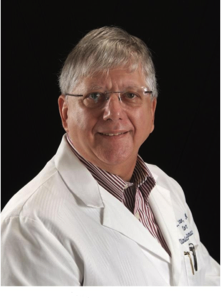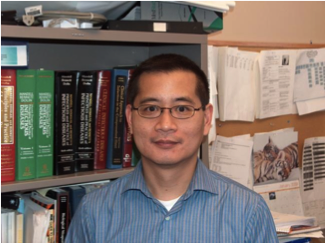Accelerating the Cure for Tuberculosis
Although tuberculosis is curable and preventable, about one-third of the world’s population is infected with TB. According to the World Health Organization, in 2014 there were 9.6 million cases of active TB, which resulted in 1.5 million deaths. Over 95 percent of TB deaths occur in low- and middle-income countries, and it is among the top 5 causes of death for women aged 15 to 44. In 2014, an estimated 1 million children became ill with TB and 140,000 children died of TB. About 80 percent of people in many Asian and African countries test positive, while 5 to 10 percent of people in the United States population have a positive tuberculin test.
There are two major challenges in the current treatment of TB: (1) drug treatments are lengthy, leading to poor compliance and reduced success; and (2) the organism responsible for tuberculosis develops resistance to the antibiotics used for treatment. According to the WHO, in 2014 an estimated 480,000 people globally have developed multidrug-resistant tuberculosis, or MDR-TB.
In this edition of On the Same Page, I am pleased to report that UF investigators have been awarded a program project grant from the National Institutes of Health to address these two major challenges. Specifically, UF has been awarded a five-year, $12 million grant (P01AI123036) titled: “Optimizing Combination Therapy to Accelerate Clinical Cure of Tuberculosis.” The major hypothesis of this project is that optimization of the sequence and combination of drugs used will markedly shorten the length of TB treatments and prevent the emergence of resistance. Needless to say, success in achieving the aims of this project — i.e., reduction in treatment duration and reduction in drug resistance — has the potential for major global impact.
 Principal investigators George Drusano, M.D., and Arnold Louie, M.D., director and co-director, respectively, of UF’s Institute for Therapeutic Innovation at Lake Nona, are joined by several collaborators in this program project: Charles Peloquin, Pharm.D., a professor in the College of Pharmacy and director of the Infectious Disease Pharmacokinetics Laboratory at UF; Stephan Schmidt, Ph.D., associate director of UF’s Center for Pharmacometrics and Systems Pharmacology at Lake Nona; and JoAnne Flynn, Ph.D., a professor of microbiology at the University of Pittsburgh.
Principal investigators George Drusano, M.D., and Arnold Louie, M.D., director and co-director, respectively, of UF’s Institute for Therapeutic Innovation at Lake Nona, are joined by several collaborators in this program project: Charles Peloquin, Pharm.D., a professor in the College of Pharmacy and director of the Infectious Disease Pharmacokinetics Laboratory at UF; Stephan Schmidt, Ph.D., associate director of UF’s Center for Pharmacometrics and Systems Pharmacology at Lake Nona; and JoAnne Flynn, Ph.D., a professor of microbiology at the University of Pittsburgh.
 The organism causing tuberculosis, Mycobacterium tuberculosis, or MTB, is a bacillus that was identified and described in 1882 by Robert Koch, for which he received the Nobel Prize in physiology or medicine in 1905. TB generally infects the lungs, but can also affect other parts of the body. Most infections do not have symptoms; such individuals are referred to as having “latent tuberculosis,” which progresses to active disease in about 10 percent of cases. If left untreated, active TB kills about half of those infected. Besides chronic cough and blood-tinged sputum, the classic symptoms of active TB include fever, night sweats and weight loss. In advanced stages, the weight loss can be significant, giving rise to term “consumption” that was historically applied to the condition.
The organism causing tuberculosis, Mycobacterium tuberculosis, or MTB, is a bacillus that was identified and described in 1882 by Robert Koch, for which he received the Nobel Prize in physiology or medicine in 1905. TB generally infects the lungs, but can also affect other parts of the body. Most infections do not have symptoms; such individuals are referred to as having “latent tuberculosis,” which progresses to active disease in about 10 percent of cases. If left untreated, active TB kills about half of those infected. Besides chronic cough and blood-tinged sputum, the classic symptoms of active TB include fever, night sweats and weight loss. In advanced stages, the weight loss can be significant, giving rise to term “consumption” that was historically applied to the condition.
Indeed, tuberculosis has been around since prehistoric times. Skeletal remains demonstrate that prehistoric humans (4000 BC) had TB, and genetic studies suggest the presence of MTB in the Americas from about 100 AD. The pulmonary form associated with tuberculosis was recognized in the late 1600s. Because of its varied presentation due to the involvement of other organ systems, however, TB was not recognized as a single disease until the 1820s. In 1839 it was named "tuberculosis" by J. L. Schönlein.
During the 19th and early 20th centuries, TB was an endemic disease of the urban poor. In 1815, 25 percent of deaths in England were due to "consumption." A century later, one in six deaths in France was still caused by TB. Infected individuals were housed in “sanitaria” to prevent airborne transmission to those who were not infected. For the poor, these sanitaria resembled prisons, but even for the well-to-do, where there was constant attention and care, 50 percent percent of those who entered such facilities died within five years.
Immunization against tuberculosis was first achieved by Albert Calmette and Camille Guérin in 1906, using attenuated bovine-strain tuberculosis in an animal model. The vaccine was honorifically called the “bacille Calmette-Guérin,” or BCG. The BCG vaccine was first used on humans in 1921 in France, but did not receive widespread acceptance in the United States and other European countries after World War II.
Introduction of the antibiotic streptomycin in the late 1940s made treatment and cure of TB a reality. (As an aside, streptomycin is of historic significance for another reason: It was one of the first drugs subjected to a multicenter, double-blind, randomized trial. This study was carried out by the Medical Research Council of Great Britain. Comparing streptomycin to bedrest (i.e., standard treatment), the efficacy of streptomycin treatment against MTB was demonstrated, albeit with evidence of acquired bacterial resistance to the drug.)
The treatment of TB is based on the ability of antibiotics to kill the bacteria. Because of the unusual structure and chemical composition of the mycobacterial cell wall, which hinders the entry of drugs, many antibiotics are ineffective. Currently, the two antibiotics most commonly used are isoniazid and rifampicin, but treatments can be prolonged, taking six months for standard therapy and often much longer for complicated cases. This leads to significant cost and lowered efficacy due to imperfect patient compliance with complicated and prolonged drug regimens. Moreover, even though combinations of several antibiotics are used, the MTB bacilli still develop drug resistance.
The series of studies proposed in the program project that will be conducted by Drs. Drusano, Louie and their colleagues have as their goal to create a sequence of drugs that will markedly reduce both the duration of treatment and the development of resistance. Part of the reason that Mycobacterium tuberculosis is so difficult to treat is that it exists in at least three metabolic states. Two of these are either slow growing or very slow growing, which makes the rate of kill of these MTB populations much lower than for “normal” MTB. Over a period of time, faculty at the Institute for Therapeutic Innovation have developed and refined a high-dimensional mathematical model that allows multiple populations of organisms of various drug susceptibilities to be simultaneously analyzed, with the results entered into a Monte Carlo simulation routine, which can then predict how a regimen will perform in a population of patients.
Indeed, the program project represents the culmination of over a decade of work.
- In 2003, Drusano, Louie and colleagues published the first description of how to suppress the emergence of resistance.
- These findings, published in the Journal of Clinical Investigation, were based on a murine system and were followed very quickly by a recapitulation of this approach in an in vitro model consisting of hollow fibers that can simulate the infection process. This model is able to recreate the concentration-time profile of the drugs used for therapy in man. It allows for measurement of the drug concentrations, total bacterial burden and number of organisms resistant to the drugs being used.
- This system allowed observation of therapy over two to three months, i.e., the entire duration of therapy being sought as the aim of this proposal.
- Noting the growing crisis in the therapy of MTB, this same group applied a similar approach to a new and promising drug for MTB therapy — moxifloxacin.
As they continued working in this field, it became clear to the investigative team that they needed to use different animal models, as well as their in vitro hollow fiber system, to (a) study varied combinations of agents mathematically to take account of the different metabolic states of MTB and (b) delineate a drug treatment regimen that would optimize both the killing of the MTB bacilli and the suppression of drug resistance. This effort produced the unique mathematical approach that now serves as the centerpiece of the program project, along with the preclinical systems (i.e., in vivo animal and in vitro hollow fiber systems) that generate the data for analysis. The overarching goal of the project is to identify one or two drug regimens that will shorten standard therapy duration of this worldwide problem from six months to two to three months while minimizing drug resistance.
Ending the TB epidemic by 2030 is among the health targets of the WHO’s Sustainable Development goals. Dr. Drusano and Dr. Louie and their team look forward to human clinical trials that can test the optimal drug regimens identified in this program project. Validation of such a regimen would be transformative for Mycobacterium tuberculosis therapy and would be a key step in achieving the goal of ending the TB epidemic.
The Power of Together,
David S. Guzick, M.D., Ph.D. Senior Vice President for Health Affairs, UF President, UF Health
About the author
